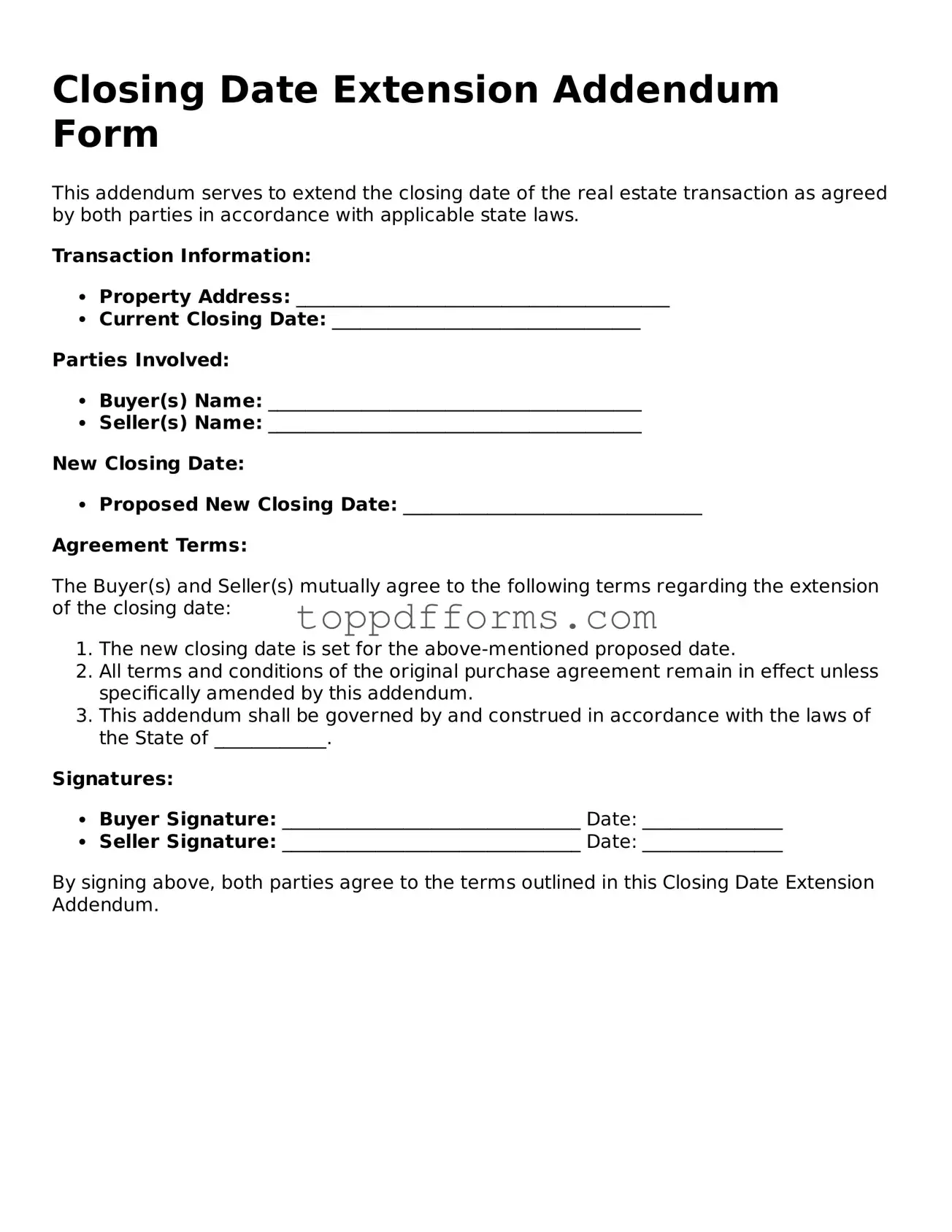What is the purpose of the Closing Date Extension Addendum Form?
The Closing Date Extension Addendum Form is used to modify the original closing date of a real estate transaction. This form allows the parties involved to agree on a new closing date, ensuring that all necessary conditions can be met before finalizing the sale. It is important for maintaining clear communication and documentation between buyers, sellers, and their respective agents.
Who needs to sign the Closing Date Extension Addendum Form?
All parties involved in the real estate transaction must sign the Closing Date Extension Addendum Form. This typically includes the buyer, the seller, and any other parties who have a vested interest in the transaction. By obtaining signatures from all relevant parties, the addendum becomes a binding agreement that reflects the new closing date.
When should the Closing Date Extension Addendum Form be used?
This form should be used when unforeseen circumstances arise that prevent the transaction from closing on the originally scheduled date. Common reasons for requesting an extension include delays in financing, title issues, or necessary repairs that have not been completed. It is advisable to submit the form as soon as the need for an extension is identified to minimize complications.
Is there a limit to how many times the closing date can be extended?
There is no specific limit to the number of times a closing date can be extended, but each extension must be mutually agreed upon by all parties involved. Repeated extensions may indicate underlying issues that need to be addressed. It is important for parties to communicate effectively and work towards resolving any problems to ensure a successful transaction.
What happens if the new closing date is not met?
If the new closing date is not met, the parties may need to revisit the terms of the agreement. Depending on the circumstances, this could lead to further extensions or potential legal ramifications. It is essential for all parties to stay informed and engaged throughout the process to avoid misunderstandings or disputes.
How should the Closing Date Extension Addendum Form be submitted?
The completed Closing Date Extension Addendum Form should be submitted to all parties involved in the transaction. This can be done electronically or through physical copies, depending on the preferences of the parties. It is important to keep a record of the submitted form for future reference and to ensure all parties have acknowledged the change in the closing date.
